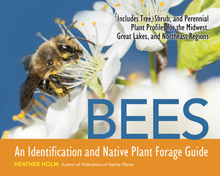I don’t know where the myth arose that there are no native butterflies or moths out and about in our area in late May and early June, and that this is a time an aerial spraying of the pesticide Btk to knock back the Spongy Moth (
Lymantria dispar dispar or LDD) can occur without adverse effect on other caterpillars.
Because, it’s said, they’re not around.
But they are.
Late May and early June is precisely when I and a group of naturalist friends share our photographs of the arrival of our first Monarch, the charismatic butterfly we’re all waiting to welcome as it ends its arduous migration from its Mexican wintering grounds.
We might or might not share our sightings of the other species that are flitting around, but sometimes they impose themselves on our consciousness. I remember one year when there was an explosion of Red Admirals, so many I worried about the numbers smashing against the car as I drove down the highway. Googling back, I found the news stories from May, 2012.
So, what is around us in spring? For an answer, I went to two sources. The first is the Toronto Entomologists’ Association’s
online records, which can be narrowed down to Simcoe County. I didn't use the earliest date, rather the one after the earliest 10 per cent of the records have been discarded - to eliminate outliers.The second, to be more specific to North Simcoe, are the first sightings recorded by Victoria Harbour naturalist Jim Charlebois up to the end of May. TEA is the first date in parenthesis, Charlebois the second:
Red Admiral (April 27, May 11), American Lady (May 2), Northern Azure (May 5, June 5); Silvery Blue (May 29, May 22), Eastern Tailed Blue (May 24, May 22), Common Ringlet (June 7, May 24), Monarch (June 14, May 24), Viceroy (June 14, June 6), Northern Crescent (June 17, May 16), Clouded Sulphur (July 1, May 24), Pearl Crescent (June 17, May 23).
Read more




